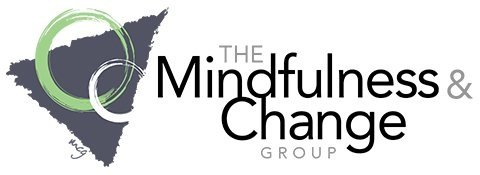Comparing Treatment Options: Why Exposure Therapy Stands Out
When it comes to treatment options for anxiety and phobias, understanding the distinct benefits of each approach is crucial. Exposure therapy, in particular, has demonstrated significant effectiveness for these disorders, distinguishing itself from other common treatments. Read on for a detailed comparison of exposure therapy with other treatments to highlight its unique advantages.
Common Treatment Options
Cognitive Behavioral Therapy (CBT): This therapy addresses negative patterns of thought that lead to maladaptive behaviors. CBT is highly effective for many anxiety disorders and depression by teaching coping skills and challenging distorted cognitions. However, for some specific phobias or severe cases of PTSD, CBT without a direct exposure component might not sufficiently address the intense fear responses triggered by certain stimuli (Hofmann, Asnaani, Vonk, Sawyer, & Fang, 2012).
Medication: Typically includes SSRIs and benzodiazepines, which can quickly alleviate symptoms of anxiety. While effective for short-term relief, these medications may require long-term use and can have side effects such as dependency and withdrawal issues. They also do not address the underlying cognitive or behavioral aspects of anxiety, potentially leading to relapse upon discontinuation (American Psychiatric Association, 2013).
Relaxation Techniques: These include mindfulness, yoga, and progressive muscle relaxation, which help reduce the physiological symptoms of anxiety such as increased heart rate and hyperventilation. While beneficial for general stress reduction and as adjunctive therapies, they are not enough to overcome specific phobias or deeply ingrained anxiety disorders without being combined with more targeted psychological interventions (Grossman, Niemann, Schmidt, & Walach, 2004).
Exposure Therapy: A Closer Look
Mechanism: Exposure therapy involves systematic and controlled exposure to the fear source, while simultaneously blocking avoidant coping behaviors (aka. response prevention). This helps extinguish the learned fear response through repeated sessions. This method not only reduces fear, but also empowers individuals by demonstrating that feared outcomes are unlikely and manageable (Smith et al., 2020) and they didn’t really need to employ avoidant coping in order to manage their anxieties.
Effectiveness: Research consistently supports exposure therapy's efficacy, particularly for obsessive-compulsive disorder, PTSD, social anxiety, separation anxiety, and specific phobias, among others. Long-term follow-ups indicate that gains from exposure therapy are maintained over years, providing enduring relief without the need for ongoing treatment.
Why Exposure Therapy Often Stands Out
Directly Addresses Fear: Exposure therapy uniquely confronts fears head on, allowing patients to process and overcome their anxieties in a safe and controlled environment. Exposing oneself to feared situations and experiences helps patients learn that they can tolerate distress and persevere through feared experiences. This direct confrontation is crucial for lasting behavioral change and reduction of avoidance behaviors that maintain anxiety.
Empowerment Through Experience: By facing their fears, patients develop confidence and practical skills to handle anxiety-inducing situations in real life, fostering resilience and self-efficacy.
Evidence-Based Success: Meta-analyses and systematic reviews have shown that exposure therapy reduces symptoms more effectively and for longer durations than other treatments, especially for phobias and PTSD, which can be less responsive to pharmacological interventions (see Effectiveness of psychological and pharmacological treatments for obsessive-compulsive disorder: A quantitative review (Abramowitz, 1997); Cognitive and behavioral treatments for anxiety disorders: A review of meta-analytic findings (Deacon & Abramowitz, 2004); Behavioral versus pharmacological treatments of obsessive-compulsive disorder: A meta-analysis (Kobak et al., 1998); Psychological treatment of panic disorder with or without agoraphobia: A meta-analysis (Sánchez-Meca, Rosa-Alcázar, Marín-Martínez, & Gómez-Conesa, 2010)).
Considerations for Choosing a Treatment
Individual Needs: The efficacy of exposure therapy can vary depending on the disorder, its severity, and the individual’s personal history. A thorough diagnostic assessment is essential to determine the most suitable treatment plan.
Therapist Expertise: Successful exposure therapy requires a skilled therapist trained in this approach. The therapist's expertise significantly influences the treatment's success and the patient's comfort level.
Availability of Resources: Consider logistical factors like location, therapy costs, and insurance coverage, as these can affect access to specific treatment types. Some practices also offer resources to help defray the cost of treatment, such as a reduced fee based on need and CareCredit.
Exposure therapy can be a great choice for treating anxiety, obsessive-compulsive disorders, and phobias due to its direct approach to confronting fears, reducing and eliminating avoidant coping behaviors, the empowerment it offers patients, and its strong evidentiary support.
References
American Psychiatric Association. (2013). Diagnostic and statistical manual of mental disorders (5th ed.). Arlington, VA: American Psychiatric Publishing.
Grossman, P., Niemann, L., Schmidt, S., & Walach, H. (2004). Mindfulness-based stress reduction and health benefits. A meta-analysis. Journal of Psychosomatic Research, 57(1), 35-43.
Hofmann, S. G., Asnaani, A., Vonk, I. J., Sawyer, A. T., & Fang, A. (2012). The efficacy of cognitive behavioral therapy: A review of meta-analyses. Cognitive Therapy and Research, 36(5), 427-440.
Smith, M. L., Glass, G. V., & Miller, T. I. (2020). The benefits of exposure therapy for anxiety and phobic disorders: A comprehensive review. Journal of Anxiety Disorders, 74, 102258.
